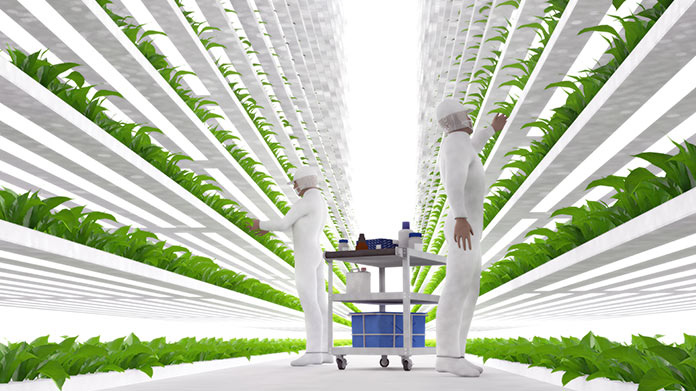
Looking to step up your hydroponic game? Well, you’re in luck! A visit to a hydro store is like Disneyland for the avid gardener. There’s an endless array of products and equipment that will take your plant cultivation skills to new heights. From nutrient-rich fertilizers to cutting-edge grow lights, there’s something for every type of flora enthusiast at a Hydro Store. In this post, we’ll dive into the amazing world of hydro stores and explore some of the incredible products available that can help you achieve green-thumb greatness. So gear up and let’s go shopping!
Introduction to Hydro Stores and Shops
A hydro store is a type of retail store that specializes in selling products related to hydroponics, including grow lights, nutrients, and hydroponic systems. Hydro stores typically carry a wide variety of products to meet the needs of both beginner and experienced hydroponic gardeners.
If you’re new to hydroponics, a hydro store can be a great place to start your research. The knowledgeable staff can answer your questions and help you find the supplies you need to get started. They can also provide helpful tips and advice on successful hydroponic gardening.
In addition to carrying essential supplies, many hydro stores also sell finished plants and herbs. This is a great option if you want to get started with hydroponics but don’t have the time or space to set up your own system. Simply purchase a ready-to-grow plant from the hydro store, and then follow the instructions for watering and fertilizing it.
Whether you’re a beginner or an experienced gardener, a visit to a hydro store is sure to be informative and exciting. With so many different products available, you’re sure to find everything you need to get started (or take your gardening to the next level).
Types of Hydroponic Systems Available
Hydroponic systems come in a variety of shapes and sizes to suit the needs of any grower. There are three main types of hydroponic systems: drip, ebb and flow, and aeroponic.
Drip systems are the most common type of hydroponic system. In a drip system, water is slowly dripped onto the roots of the plants. The excess water is then collected and reused. Drip systems can be either gravity-fed or pump-fed.
Ebb and flow systems work by flooding the roots with nutrient-rich water and then draining it away. This cycle is repeated several times throughout the day. Ebb and flow systems can be either passive or active. Passive ebb and flow systems rely on gravity to move the water, while active ebb and flow systems use pumps to circulate the water.
Aeroponic systems are the least common type of Hydro Shop system. In an aeroponic system, the roots are suspended in air and misted with nutrient-rich water. Aeroponic systems can be either closed or open loop. Closed loop aeroponic systems recycle the nutrient-rich water, while open loop aeroponic systems do not.
Different Growing Mediums and Supplies
A hydro store will typically carry a wide variety of growing mediums and supplies. This can include everything from soil to hydroponic systems. Here is a look at some of the most popular options:
-Soil: This is the traditional growing medium that most gardeners are familiar with. It is easy to find and relatively inexpensive. However, it does require more maintenance than other options.
-Hydroponic Systems: These systems use nutrient-rich water instead of soil. They are often used by commercial growers because they are very efficient. However, they can be expensive to set up and maintain.
-Coconut Coir: This is a popular alternative to soil that is made from coconut husks. It is lightweight, durable, and holds moisture well. However, it can be expensive.
-Perlite: This is a volcanic rock that is commonly used in hydroponic systems. It is very lightweight and helps aerate the roots of plants. However, it can be dusty and hard to clean up.
Nutrients and Additives for Growing Plants in a Hydroponic System
Hydroponic systems provide an efficient way to grow plants without the use of soil. A variety of nutrients and additives are available to help plants thrive in a hydroponic system.
Nutrients are essential for plant growth and development. Plants absorb nutrients through their roots from the surrounding growing medium. In a hydroponic system, nutrients are added to the water that circulates through the system. There are many different types of nutrient solutions available, so it is important to choose one that is formulated for use in a hydroponic system.
Additives can also be used in a hydroponic system to help plants grow and thrive. Additives such as rooting hormones, wetting agents, and pH adjusters can be added to the nutrient solution to improve plant growth.
Lighting Options for Indoor Growing
If you’re looking to get into indoor growing, one of the first things you’ll need to consider is what kind of lighting you want to use. There are a few different options available, each with its own set of pros and cons. Here’s a quick rundown of some of the most popular choices:
Fluorescent lighting is one of the most affordable options and can be found in both T5 and CFL form. It’s not as bright as some other choices, but it doesn’t produce a lot of heat, making it a good option for smaller grow spaces.
LED lighting is more energy-efficient than fluorescent or HID lights and emits very little heat, making it ideal for space-constrained setups. However, LEDs can be more expensive upfront.
